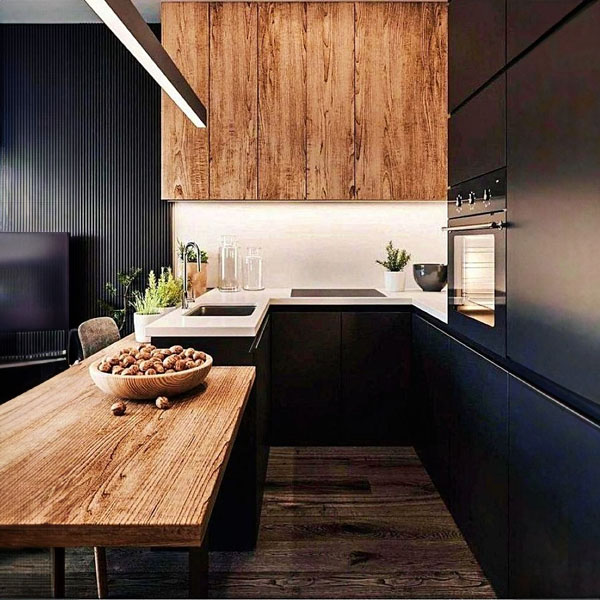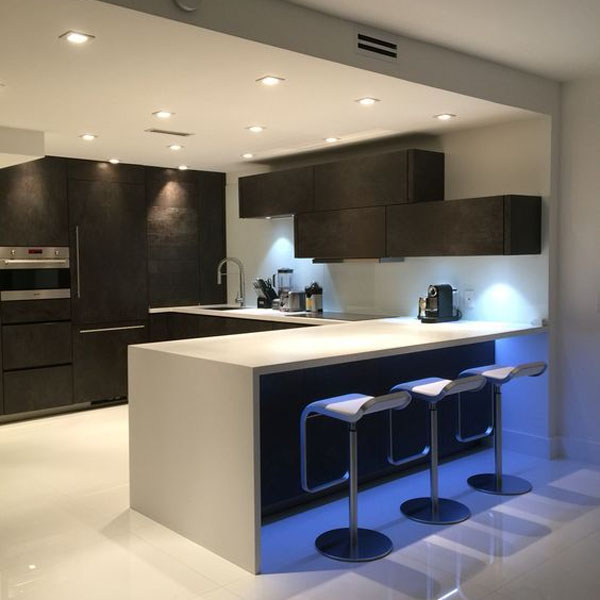The heart of the home lies not in the living room, but in the kitchen. It’s where meals are crafted, memories are made, and the day’s stories are shared. Achieving harmony in culinary spaces through thoughtful kitchen design can significantly elevate home living, transforming it into a realm of creativity, comfort, and connection. This comprehensive guide explores how integrating aesthetics, functionality, and personal touch can create a kitchen that not only serves as a cooking space but also as a sanctuary for the soul.
The Essence of Kitchen Harmony
Harmony in the kitchen is achieved when design and functionality converge to meet the homeowner’s lifestyle and needs. It’s about creating a space that resonates with the individuals who use it, reflecting their personality while ensuring practicality and ease of movement. This harmony is essential for fostering an environment where culinary creativity can flourish, and daily routines are streamlined, making every task from cooking to cleaning, a more enjoyable experience.
Design with Purpose: Aesthetics Meet Functionality
The foundation of a harmonious kitchen lies in its design. It’s not just about choosing the right colors or materials, but about how the space functions. The layout should promote efficient workflow, with the sink, refrigerator, and stove forming a triangular path that minimizes unnecessary movements. Adequate storage and countertop space are paramount, ensuring everything has its place, which contributes to a clutter-free and aesthetically pleasing environment.
Material Matters
Selecting the right materials is crucial for both the look and longevity of your kitchen. Natural materials like stone, wood, and marble add warmth and texture, creating an inviting space. For durability, consider engineered quartz for countertops and high-quality laminates for cabinetry. These materials offer resilience against wear and tear while maintaining an elegant appearance.
Lighting: The Mood Modifier
Proper lighting can dramatically alter the mood of a kitchen. Incorporating layers of light with task, ambient, and accent lighting not only enhances functionality but also creates a warm and welcoming atmosphere. Under-cabinet lights can illuminate workspaces, while pendant lights over an island add style and focus. Dimmer switches allow for adjusting the ambiance to match the time of day or the task at hand.


Personalizing Your Culinary Space
A kitchen should reflect the personality and preferences of those who use it. Personal touches, whether through color schemes, decorative items, or unique hardware, can transform a standard kitchen into a personalized culinary haven. Incorporating elements that resonate with your personal style encourages a sense of belonging and comfort.
The Role of Technology
Integrating smart technology into kitchen design not only elevates convenience but also enhances the culinary experience. From smart refrigerators that keep track of groceries to voice-controlled faucets and ovens that can be preheated remotely, technology can streamline cooking processes, making the kitchen more efficient and enjoyable to use.
Creating a Social Hub
The kitchen is not just a place for cooking but also a social hub for entertaining and interaction. Designing a kitchen with socializing in mind involves creating spaces for guests to gather without disrupting the cooking area. An island or breakfast bar can serve as a focal point for social interaction, offering seating and a surface for dining or casual conversation. Open-plan kitchens further enhance this social aspect, blending the kitchen space with living areas to promote a more inclusive environment.
In the midst of exploring the intersection of design and functionality, it’s essential to mention the role of the C workshop in crafting custom kitchen elements that truly reflect the homeowner’s vision. The C workshop specializes in creating bespoke kitchen cabinets, islands, and storage solutions, ensuring that every detail is tailored to fit the unique needs and style preferences of each client. Their expertise in combining craftsmanship with innovative design allows for the creation of not just a kitchen, but a masterpiece of personal expression and efficiency.
Sustainable Practices in Kitchen Design
Sustainability is becoming increasingly important in kitchen design. Opting for eco-friendly materials, energy-efficient appliances, and water-saving fixtures not only benefits the environment but can also lead to savings on utility bills. Incorporating natural light through windows or skylights reduces the need for artificial lighting during the day, while choosing locally sourced materials can reduce the carbon footprint associated with your kitchen renovation.
Conclusion: The Heart of Home Living
The kitchen is more than just a place for preparing meals; it’s a central hub for connection, creativity, and comfort. Achieving harmony in culinary spaces through thoughtful design elevates home living to new heights, creating an environment that nurtures both the body and the soul. By blending aesthetics with functionality, personalizing the space, and embracing sustainability, you can design a kitchen that not only meets your culinary needs but also becomes a cherished space for gathering, sharing, and living.
















